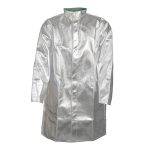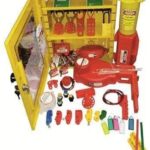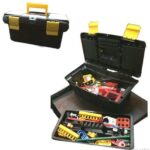Your list is empty, add products to the list to send a request
The Importance of Fire Drills and Evacuation Plans: Ensuring Safety in Every Building

19
Jul
The Importance of Fire Drills and Evacuation Plans: Ensuring Safety in Every Building
In today’s world, where safety is paramount, understanding the significance of fire drills and evacuation plans is crucial for every organization, business, and household. These essential practices not only save lives but also minimize property damage in the event of an emergency. This article will explore the various aspects of fire safety in Bangalore, including the importance of proper equipment, regular drills, and well-designed evacuation plans.
The Fundamentals of Fire Safety
Fire safety begins with awareness and preparation. One of the most basic yet crucial elements of fire safety is the **fire extinguisher**. Whether it’s a standard **foam type fire extinguisher** or a more specialized **gas fire extinguisher**, having the right equipment on hand can make all the difference in containing a small fire before it spreads.
Modern innovations have also introduced alternatives like the **fire extinguisher ball** or **elide fire ball**. These compact, throwable devices can be an effective first line of defense, especially in areas where traditional extinguishers might be difficult to use.
Proper storage and accessibility of fire safety equipment are equally important. **Fire extinguisher hanger hooks** ensure that these life-saving devices are always within reach and easily identifiable. For larger buildings, a **hose reel** system, complete with a **hose reel drum** and **hose reel pipes**, provides an additional layer of fire-fighting capability.
The Role of Fire Drills in Safety Preparedness
Fire drills are more than just a routine exercise; they are a critical component of any comprehensive safety plan. Regular drills help familiarize occupants with evacuation routes, emergency procedures, and the location of safety equipment. Here’s why fire drills are indispensable:
1. Muscle Memory: Repetition creates familiarity. In high-stress situations, people tend to fall back on learned behaviors. Regular drills ensure that evacuation procedures become second nature.
2. Identifying Weaknesses: Each drill provides an opportunity to assess and improve the evacuation plan. Issues like blocked exits or confusing signage can be addressed before a real emergency occurs.
3. Testing Equipment: Drills allow for regular testing of safety equipment such as **emergency exit lights**, **fire hooters**, and **hooter alarms**. This ensures that all systems are functioning correctly when they’re needed most.
4. Reducing Panic: Familiarity with emergency procedures helps reduce panic during actual emergencies, leading to more orderly and efficient evacuations.
Designing Effective Evacuation Plans
An evacuation plan is only as good as its design and implementation. Here are key elements to consider when creating or updating your evacuation plan:
1. Clear Signage: Proper signage, including illuminated **emergency exit light** fixtures, guide people to safety quickly.
2. Multiple Exit Routes: Always provide and clearly mark alternative exit routes in case primary routes are blocked.
3. Assembly Points: Designate safe assembly areas outside the building where evacuees can gather and be accounted for.
4. Special Considerations: Plan for individuals with disabilities or those who might need extra assistance during an evacuation.
5. Regular Updates: As buildings change or renovate, ensure that evacuation plans are updated accordingly.
Essential Fire Safety Equipment
Beyond the basics, a comprehensive fire safety strategy includes a range of specialized equipment:
– **Fire axe**: For breaking through obstacles or creating emergency exits.
– **Rosette plate**: Used in sprinkler systems to cover the ceiling opening around the sprinkler head.
– **4 way fire brigade inlet**: Allows fire departments to supplement a building’s sprinkler or standpipe system with water from their trucks.
– **Sprinkler heads**: Automatic fire suppression systems that activate when detecting high temperatures.
– **Kitchen fire extinguisher**: Specially designed for cooking-related fires, often using wet chemical agents.
– **LPG gas leak detector**: Early warning system for potentially dangerous gas leaks.
– **Fire extinguisher cylinder**: The main body of the extinguisher containing the fire-suppressing agent.
Personal Protective Equipment (PPE) in Fire Safety
While often overlooked, personal protective equipment plays a vital role in fire safety, especially for those tasked with firefighting or managing evacuations:
– **Bata hunter shoes** and **atom safety shoes**: Provide protection against heat, falling objects, and slippery surfaces.
– **Liberty police shoes**: Durable footwear designed for first responders and security personnel.
– **Agni suraksa**: Fire-resistant clothing that provides crucial protection for firefighters and industrial workers in high-risk environments.
Training and Education
Equipment alone isn’t enough; proper training is essential. Regular fire safety workshops should cover:
– Proper use of different types of fire extinguishers
– Understanding fire classes and appropriate suppression methods
– Evacuation procedures and assembly point locations
– Basic first aid for fire-related injuries
Leveraging Technology for Enhanced Fire Safety
Modern technology has revolutionized fire safety. Advanced systems now include:
– Smart smoke detectors that can differentiate between steam and smoke
– Mobile apps that provide real-time evacuation instructions
– Building management systems that integrate fire detection, suppression, and evacuation protocols
Legal Compliance and Regular Inspections
Adhering to local fire safety regulations is not just a legal obligation; it’s a moral imperative. Regular inspections by certified professionals ensure that all systems are up to code and functioning correctly. This includes checking:
– Fire extinguisher pressure and expiration dates
– Integrity of fire doors and seals
– Functionality of alarm systems and emergency lighting
– Clearance of evacuation routes
The Human Element in Fire Safety
While equipment and plans are crucial, the human element remains the most critical factor in fire safety. Designating and training fire wardens or safety officers for each area of a building ensures that there are knowledgeable individuals ready to lead in an emergency.
These individuals should be easily identifiable, perhaps wearing distinctive clothing or **armour** to protect themselves while assisting others. Their responsibilities include:
– Conducting regular equipment checks
– Leading evacuation drills
– Assisting in real emergencies
– Providing ongoing fire safety education to colleagues or residents
Community Involvement and Awareness
Extending fire safety awareness beyond the immediate premises can create a safer community overall. Consider:
– Hosting community fire safety workshops
– Collaborating with local fire departments for demonstrations and training
– Encouraging neighboring businesses or residences to coordinate their fire safety efforts
The Psychological Impact of Fire Preparedness
Being well-prepared for fire emergencies doesn’t just improve physical safety; it also has significant psychological benefits:
– Reduced anxiety about potential emergencies
– Increased confidence in one’s ability to handle crisis situations
– A sense of community and shared responsibility among building occupants
Continuous Improvement in Fire Safety
Fire safety is not a one-time implementation but an ongoing process of improvement. Regular reviews and updates should consider:
– New technologies and equipment available in the market
– Lessons learned from drills and any actual incidents
– Changes in building layout or occupancy
– Updates to local fire safety regulations
The Role of Professional Fire Safety Consultants
For complex buildings or high-risk environments, engaging professional fire safety consultants can provide invaluable expertise. These specialists can:
– Conduct comprehensive risk assessments
– Design custom fire safety plans
– Provide specialized training programs
– Ensure compliance with all relevant regulations
Conclusion
Fire safety is a multifaceted discipline that requires attention to detail, ongoing education, and a commitment to continuous improvement. By implementing robust fire drills, well-designed evacuation plans, and maintaining proper equipment, we can create safer environments for everyone. Remember, in fire safety, preparation is not just beneficial – it’s life-saving.
FAQs
1. Q: How often should we conduct fire drills?
A: The frequency of fire drills depends on your specific circumstances, but generally, it’s recommended to conduct them at least twice a year. For high-risk environments or large organizations, quarterly drills may be more appropriate. Firesupplies recommends consulting with a fire safety professional to determine the best schedule for your needs.
2. Q: What types of fire extinguishers does Firesupplies offer?
A: Firesupplies provides a wide range of fire extinguishers, including foam type, gas, and specialized kitchen fire extinguishers. We also offer innovative solutions like the fire extinguisher ball. Our experts can help you choose the right type for your specific environment.
3. Q: How do I know if my building’s evacuation plan is adequate?
A: A good evacuation plan should be clear, easy to follow, and account for all areas of your building. It should include multiple exit routes, designated assembly points, and considerations for individuals with special needs. Firesupplies offers professional evaluation services to assess and improve your evacuation plans.
4. Q: What is the lifespan of a typical fire extinguisher?
A: Most fire extinguishers have a lifespan of 5-15 years, depending on the type and manufacturer. However, they require regular inspections and maintenance. Firesupplies recommends annual professional inspections and offers maintenance services to ensure your extinguishers are always in working order.
5. Q: Can Firesupplies help with fire safety training for our staff?
A: Absolutely! Firesupplies offers comprehensive fire safety training programs tailored to your organization’s needs. Our training covers everything from proper use of fire extinguishers to evacuation procedures and basic fire prevention techniques.
Don’t leave your fire safety to chance. At Firesupplies, we’re committed to providing top-quality fire safety equipment, expert consultation, and comprehensive training to ensure your premises are as safe as possible. From fire extinguishers to complete evacuation plan designs, we have the tools and expertise you need to protect what matters most. Contact Firesupplies today for a free fire safety assessment and take the first step towards a safer tomorrow. Remember, when it comes to fire safety, preparation is everything – and Firesupplies is here to help you prepare for the unexpected.






































